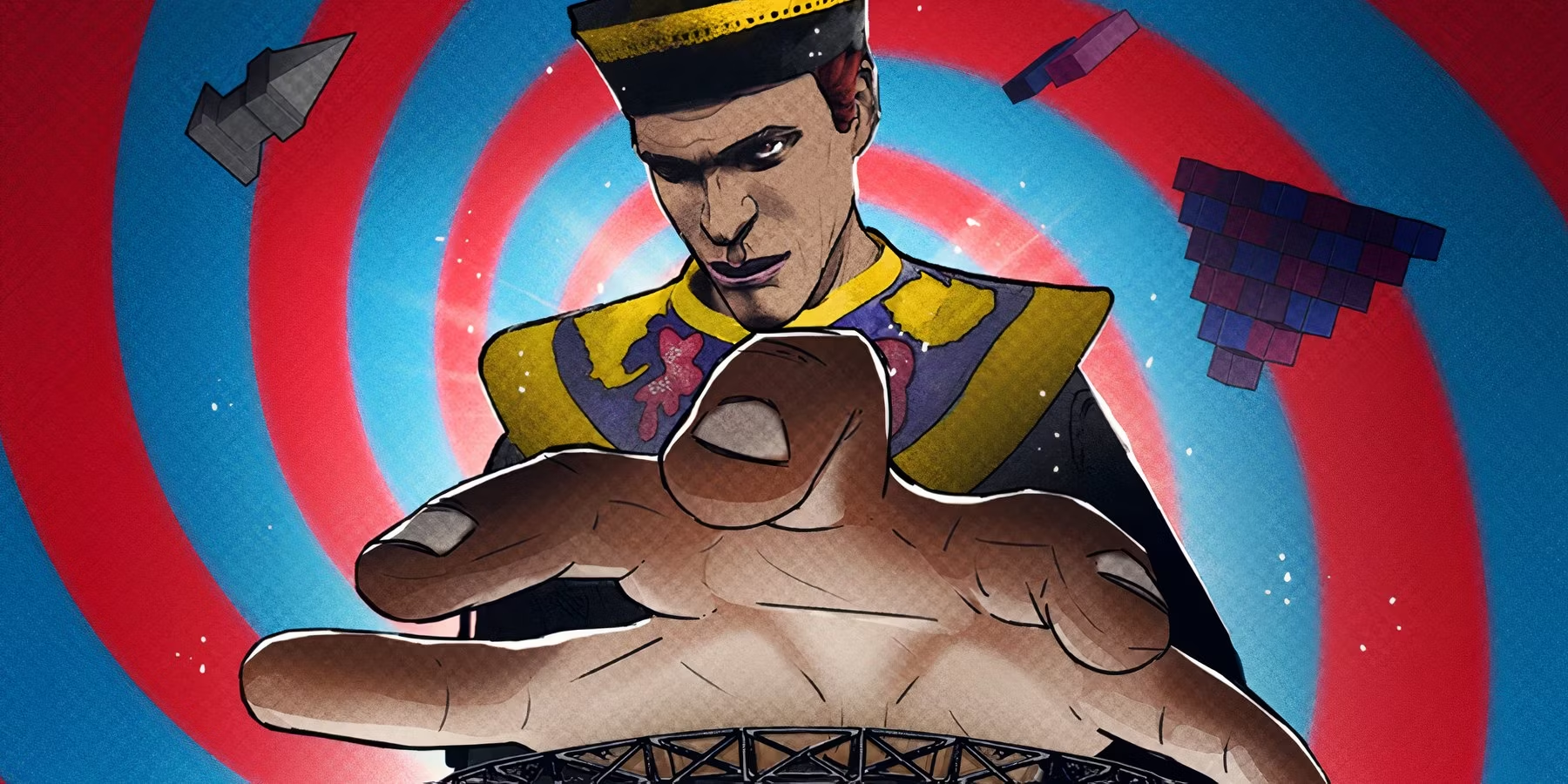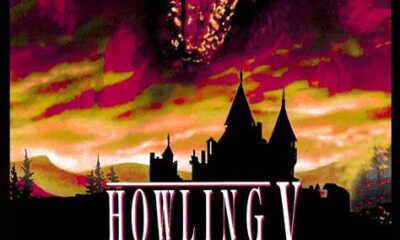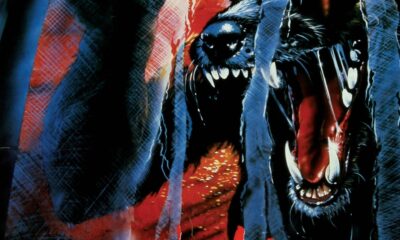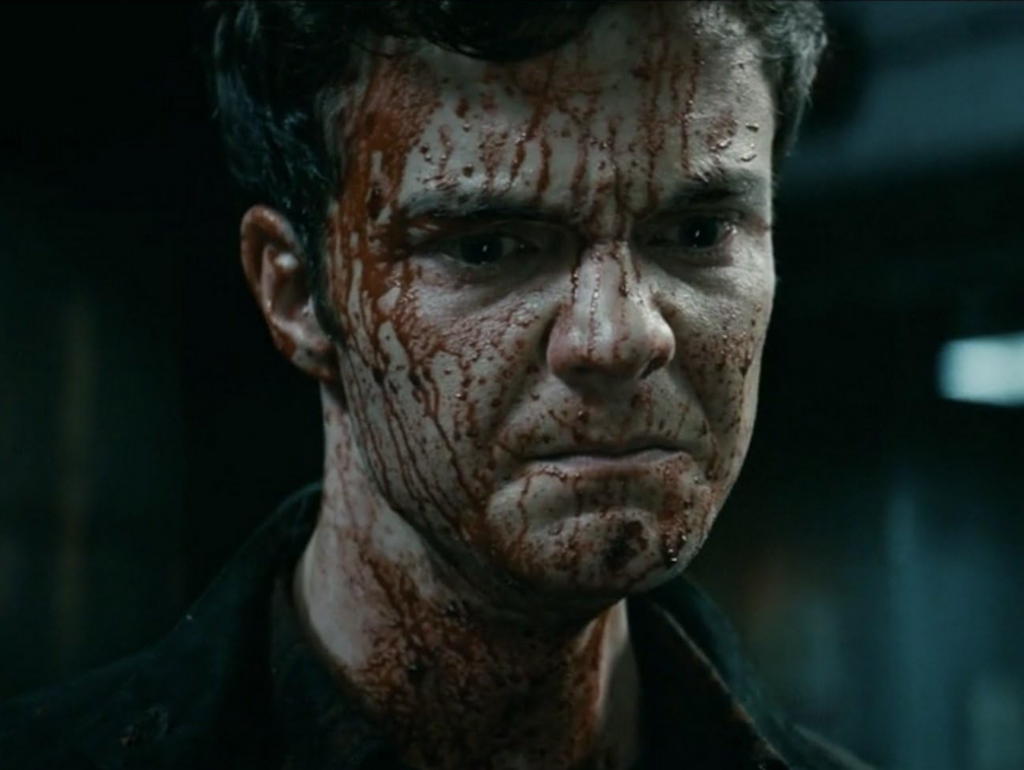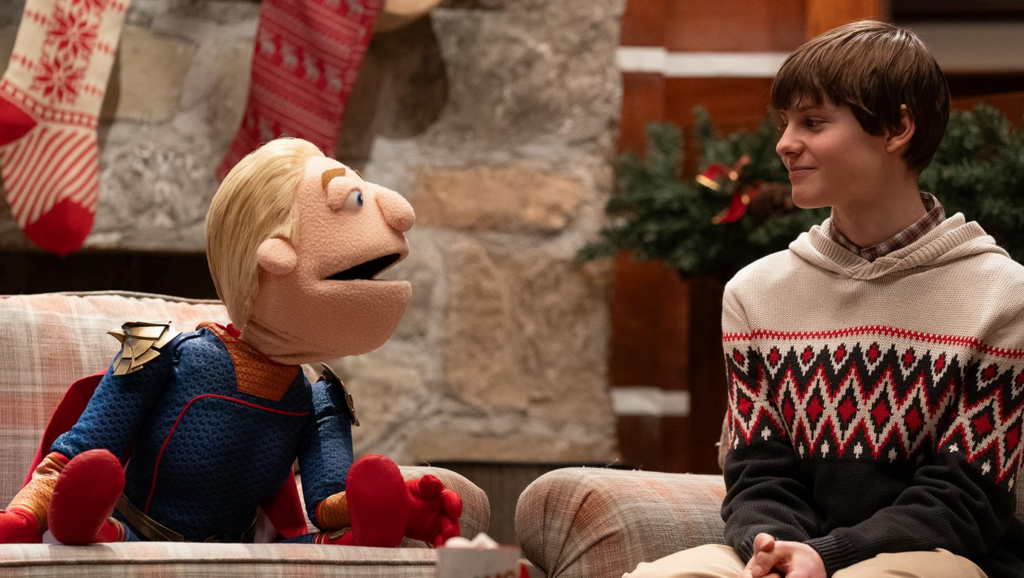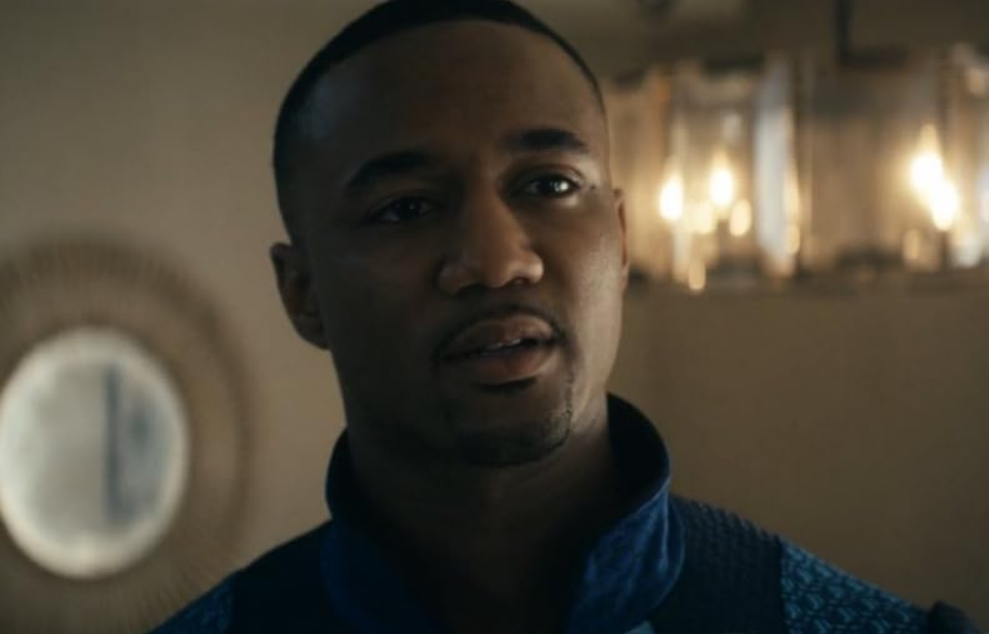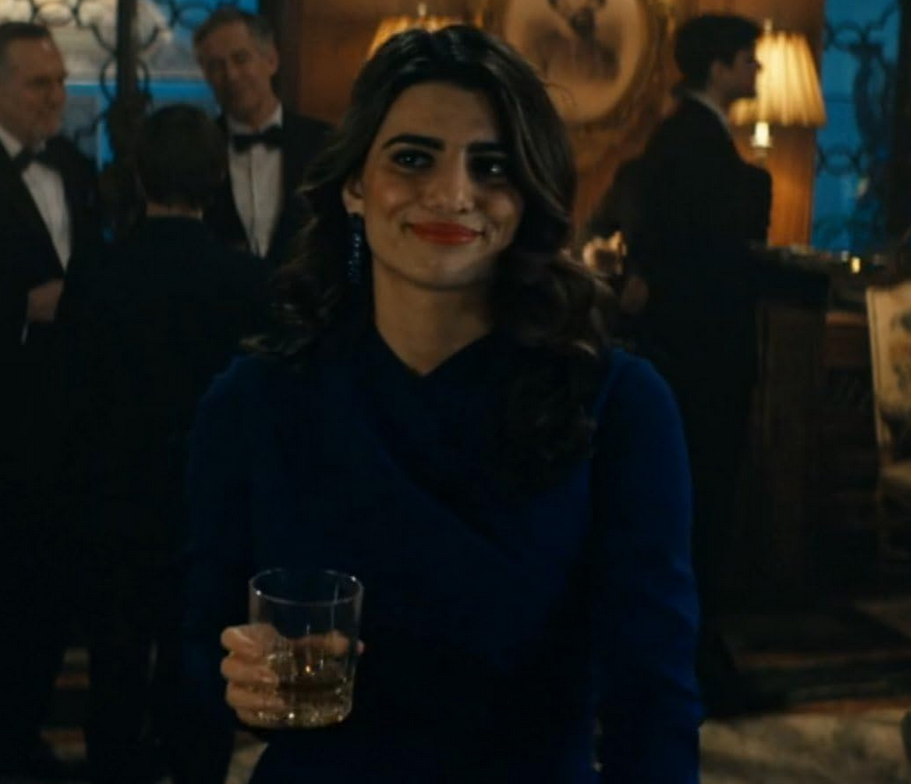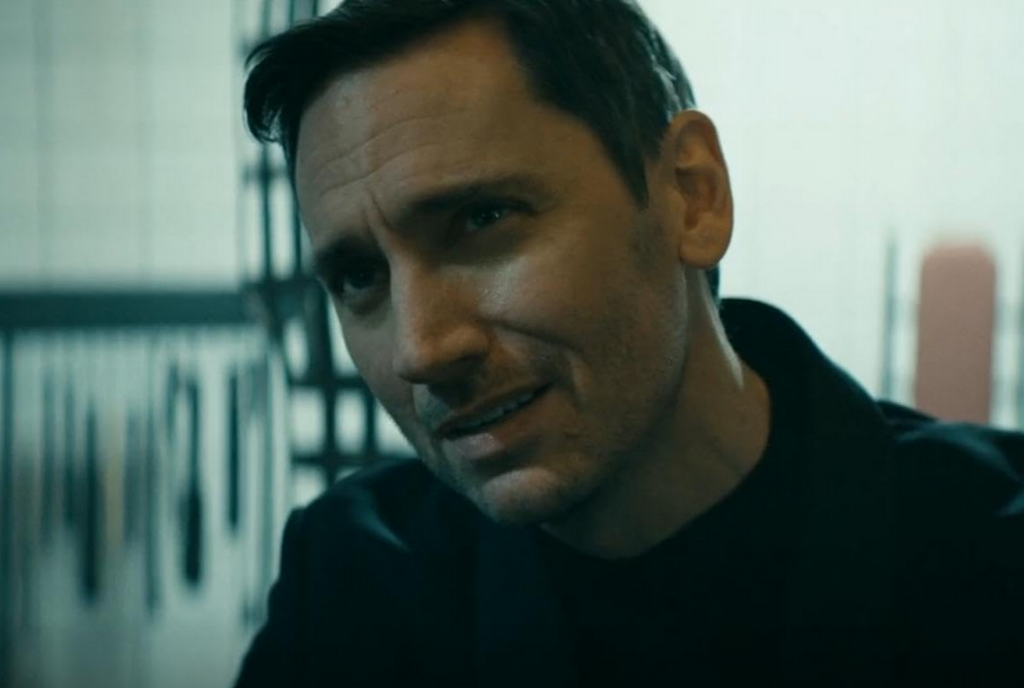
Notes from the Last Drive-In: S3E9 – Evilspeak and The Day of the Beast
More Videos
Published
3 years agoon
Welcome back to Notes from the Last Drive-In, where we take in the message of the dark lord Satan in a double feature on our penultimate week. The first of the films is the 1981 Clint Howard classic Evilspeak, while the night rounds out with the Spanish film The Day of the Beast (1995). So how was this early Summer devil’s night on Shudder? Let’s find out together.
More Joe Bob lists. What is this? Goth Letterman?#thelastdrivein @therealjoebob @kinky_horror @shudder— Haunted MTL 🏳️🌈 (@HauntedMTL) June 12, 2021
Evilspeak (1981)
Joe Bob with the Underwood Upright#thelastdrivein @therealjoebob @kinky_horror @shudder pic.twitter.com/VrhW6P2wgj— Haunted MTL 🏳️🌈 (@HauntedMTL) June 12, 2021
Opening: There are really only five college movies. Every other one is a variation on a theme.
What happens when you send Clint Howard to a military academy, bully the hell out of him, and connect with Satan using an Apple II? You get 1981’s Evilspeak. This charming, incredibly goofy film is an average film for the drive-in but definitely delivers on all three Bs: blood, breasts, and beasts. The film, directed by Eric Weston and co-written by Weston and Joseph Garofalo, stars Clint Howard as Stanley Coopersmith, a downtrodden cadent who uncovers an ancient book used in a black mass ritual. Naturally, He ends up using a computer to tap into the spells within and summon Satan himself to get his revenge on those who wronged him. The film also features R. G. Armstrong, Joseph Cortese, Lenny Montana, and Don Stark.
The film is every bit as goofy as you’d expect a 1981 Satanic horror film involving computers to be. It has plenty of blood, s surprising but welcome shower scene (the other one features Clint Howard, so your mileage may vary), and a group of feral hogs, the likes of which we haven’t seen since Hogzilla. The plot is ridiculous, but that’s not necessarily a strike against the movie. Creating a ritual site of rogue former Catholics on the California coast before the Spanish missions is ridiculous but at least plausible enough to work. The strange quasi-Christian-military academy is just as odd and yet consistent a choice with the film. The film is like that the whole way through, making what might seem like strange choices in narrative, yet they just kind of work because that is the sort of film it is.
There isn’t an actor in the film that doesn’t pull their weight – there’s no bad performance in the bunch. Clint Howard sells the abused and tormented outcast well with enough hints at the menace beneath that is unveiled fully in the film’s apocalyptic climax. His transformation from prey to predator is satisfying in the scope of the narrative and performance. Meanwhile, veteran western actor R. G. Armstrong chews the scenes as Sarge, a menacing groundkeeper. Perhaps most surprising for most audiences would be Lenny Montana, best known as Luca Brasi in The Godfather, playing the cook. It is a surprising and fun turn for an actor who filled in a role of such menace in the mafia classic.
Visually speaking, for a movie with a pretty low budget, it’s quite good-looking at times, thanks to the cinematographic eye of Irv Goodnoff. There is also some fun editing by Charles Tetoni with an incredible cut between a severed head and a soccer ball. The whole movie comes together with the only loose gear coming in the form of the sometimes strange sitcom-style score by Roger Kellaway. The oddity of the music does add its own charm, of course.

Joe Bob’s segments mostly revolved around the night’s guest, Clint Howard. Clint’s stint as a guest was fantastic, and he is certainly among the top three special appearances of the show’s history. He was affable, charming, and had some fascinating stories about his experiences in Hollywood, from Star Trek to The Andy Griffith Show, and of course, Evilspeak. One particularly fascinating factoid was the few brushes with a disaster that Clint Howard narrowly avoided, such as the usage of fuller’s earth on the set and the usage of rubber cement smoke – both hazardous substances in hindsight. That’s not even getting into the giant live pigs on set.
The host segments for the first half of the night reached their absolute peak, with a new musical number, “Clint Howard (Thank You)” by John Brennan. It was adorable and charming and even featured a surprise visit from Ron Howard.
"Clint Howard (Thank You)" is the most heartfelt song I've written. Thank you, Clint! Thank you #TheLastDriveIn @therealjoebob @RadioParfait @JustinMartell12 @Manjourides @kinky_horror @shudder & #MutantFam!
Feat. https://t.co/x5AaQch2DR
Relisten here: https://t.co/DK8UQ0kiHO pic.twitter.com/oLiwraj5k6— John Brennan aka Johnny Bubba (@badtechno) June 12, 2021
Evilspeak is a solid drive-in film. While I disagree with Joe Bob Briggs’ four-start assessment of the movie, I think it is worth the ride. The story is pretty entertaining with enough of that 1980s style goofiness to add some unintentional laughs. It also has one Hell of a finale, pun intended. During the show, Clint Howard mentioned an interest in a follow-up or remake: I could see that happening with some significant changes, such as losing the computer used in summoning. Overall, Evilspeak is one I would watch again, so I am giving it four out of five Cthulhus.

Best Line: “There’s my fucking crowbar!” – Sarge, upon having located his crowbar.
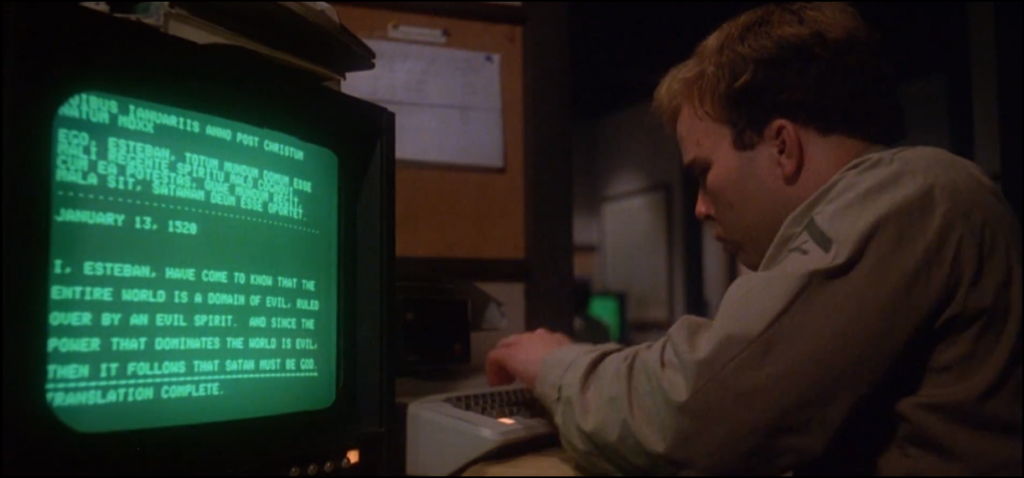
The Day of the Beast (1995)
#goals #TheLastDriveIn https://t.co/zVyGa5Yj5t— Diana “Darcy the Mail Girl” Prince (@kinky_horror) June 12, 2021
Opening: Subs vs. Dubs: No longer a fight just for anime nerds.
The Day of the Beast (in Spanish, El día de la Bestia) was my favorite of the night’s films and one of the best of the season. The movie is also one of the funniest ever aired on The Last Drive-In. Directed by Álex de la Iglesia and co-written by Iglesia and Jorge Guerricaechevarría the film stars Álex Angulo, Armando De Razza, and Santiago Segura. The Day of the Beast follows a priest, Ángel, and he commits as much evil as he can to find his way into a Satanic cult, believing that the AntiChrist will be born on Christmas Eve. He is aided by heavy metal fan José and TV occultist Cavan who quickly find themselves in the center of a Satanic storm.
I cannot stress enough how funny this movie is. Humor can be extremely subjective, and this can be especially true with the language and cultural barriers. What is hilarious in one context can be puzzling in another, such as wordplay in the form of idioms. A line may be hilarious in its original language, but translating it may kill it. The Day of the Beast doesn’t seem to have these issues because the gags are seemingly universal. At one point, Joe Bob mentioned Álex Angulo has an almost Buster Keaton type physicality, and that is a perfect description. A lot of the humor is physical, broad comedy. People being hit, shot, stabbed, chasing one another through rooms, being tied up. It sounds ridiculous, but it works. The central performances are also fantastic, with the three leads forming a trio that reminded me of The Three Amigos and evoked The Three Stooges at times. The film also serves as winning satire, an incredible feat given the potential language barrier and the stick issue of religion, but it absolutely sticks the landing.
All of the story-driven humor is accomplished through great storytelling. Another insight Joe Bob Briggs brought to his read of the film, one that blew my mind when he mentioned it, is that the film is essentially a retelling of Don Quixote, that Spanish literary classic. Ángel is Quixote with José as Sancho, and the journey reflects the themes and structure of the book. It is an awe-inspiring feat. The film has so much depth I am certain I have missed many details in my initial viewing, between note-taking and live-tweeting. It is one I am going to need to watch again.
The film is also gorgeous at times, with cinematographer Flavio Martínez Labiano really making Madrid look like a dirty, sinful place, but with special effects that most definitely show their age. One particularly comical rear-projected fall evokes feelings of Mystery Science Theater 3000. The bestial, demonic Satan depiction is entertaining, but again, a bit dated now, at least given the effects. For the time, though? Impressive. The gore is a bit limited as well, but it works, such as an incident involving a shotgun and an ear.
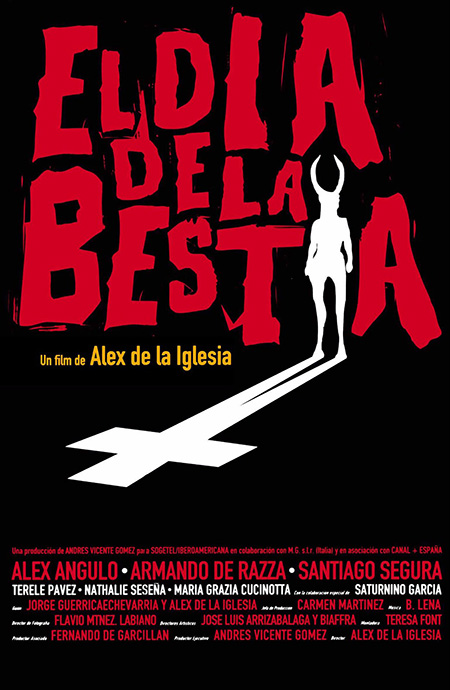
Joe Bob’s insights were great and layered in some solid social commentary and a little history – such as how the movie would fit into the history of the Spanish missionary wave in California. One of the more fun moments was him talking about his own time in Spain in his youth. College Joe Bob seemed super fun. What the heck happened? Hearing about the works of a director that I had not seen before was very fun and part of why I enjoy having Joe Bob pop up during the movies. I came out of The Day of the Beast with another five movies to watch.
The back half of the night had what I would argue to be the superior film. I’ve been poking fun at Joe Bob throughout the season for being a bit generous with his ratings, but I found it unfortunate that the superior of the two films, The Day of the Beast, only took three stars. I’m not in agreement, I think The Day of the Beast is a tremendously funny horror film, and I give it four and a half out of five Cthulhus. It’s just so damn good.

Best Line: “You must help me contact the devil.” – Father Ángel, spoken like a true man of God.
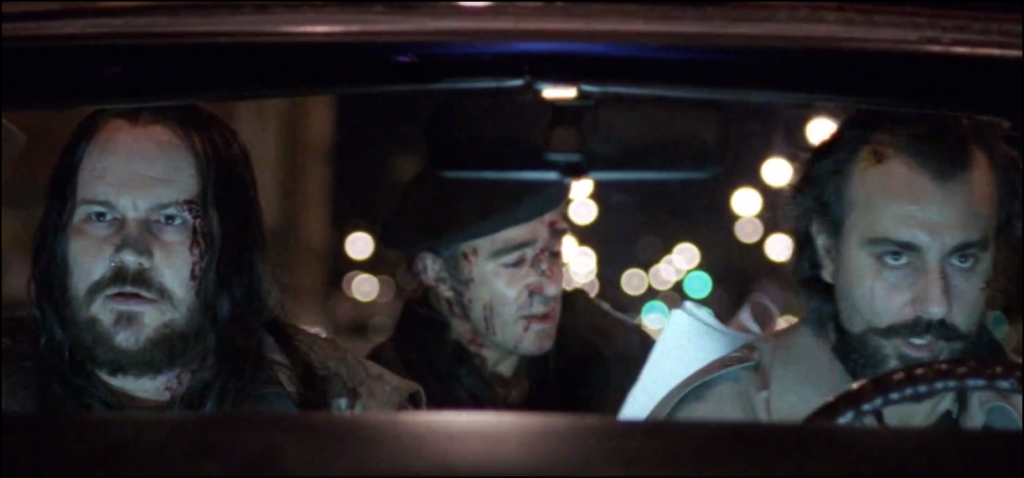
Haunted MTL Drive-In Totals
As always, here are the official totals provided by the show.
I’m sorry, did @therealjoebob just say “Chandelier Body-Piercing”? #TheLastDriveIn pic.twitter.com/iPvJ71YZTA— Shudder (@Shudder) June 12, 2021 1 Makeshift Satanic Rite, With Flaming Pentagram and Death Metal Mixtape 🤘🤘 #TheLastDriveIn pic.twitter.com/kZcHX1Fueb— Shudder (@Shudder) June 12, 2021
As for our own totals…
- 10 dead dogs this season
- 2 Yuki Sightings
- 250 Clint Howard movies
- 24-hour shoot for floating Coopersmith
- A Dozen Hogs
- John Brennan Musical Number
- Gratuitous Public Access Occultism
- Surprise Opie
- Buddhist Joking
- Farmer Joking
- Foot Crosses
- Burning Crosses
- Falling Crosses
- Digital Devilry
- Swine Fu
- Tron Fu
- E S T E B A N
- Darcy Cosplays: Ms. Heavy Artillery and Devil’s Night Darcy
- Silver Bolo Award: Bloodbath and Beyond
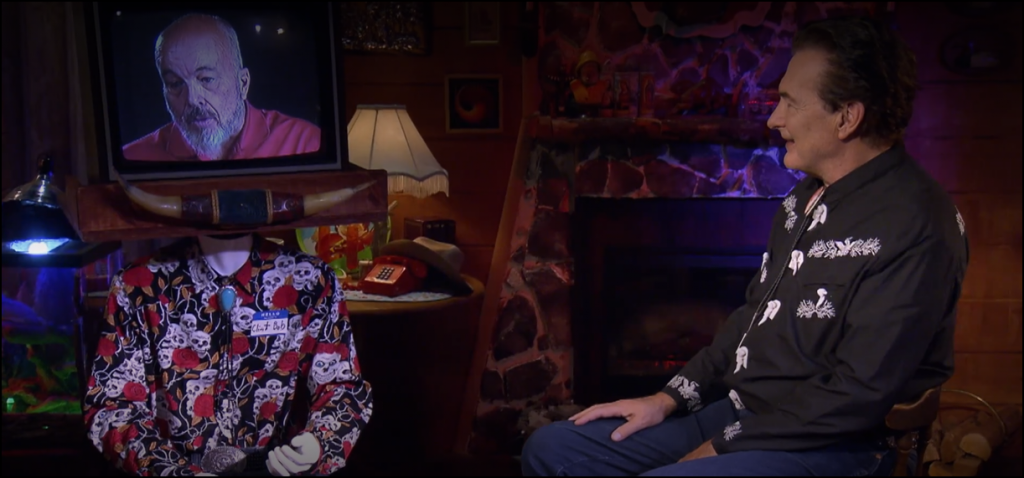
Episode Score
It was another fine night at the drive-in. I appreciate the show because I end up having a great time from week to week, even if the movies were awful. Such is the case with last week’s offerings, yet the whole night ended up being a blast. Sometimes I worry the reviews sound the same week to week because of this. It’s all Joe Bob’s fault for having such a remarkably consistent show.
It’s gonna be a bummer of a couple of months until we get our next, inevitable mini-marathon.

Join us this Friday on Twitter as we live-tweet the season finale. Will we finally get Halloween III? Probably not! I bet that one of the movies will be Another WolfCop. Will it be fun? Most certainly!
Her saying she hasn't seen the book and them pulling it from her drawer when he leaves is exactly why I have trust issues.#thelastdrivein @therealjoebob @kinky_horror @shudder— Haunted MTL 🏳️🌈 (@HauntedMTL) June 12, 2021
David Davis is a writer, cartoonist, and educator in Southern California with an M.A. in literature and writing studies.

You may like
We have come now to the finale of season four of The Boys. And while it didn’t have the literal blood fireworks I wanted, someone did get ripped in half in the air. So, that’s pretty close.
As a note, I will try to avoid spoilers as much as possible. This ending was a hell of a gut punch that should be experienced as blindly as possible. That being said, I will not be able to avoid spoilers and still give a full legitimate review. Proceed at your own risk.
The story
The main storyline for this episode is the attempted assassination of President-Elect Robert Singer. The Boys join forces with the Secret Service to protect him. But, as we learned last episode, Annie has been replaced with a shapeshifter. A shapeshifter that was welcome not just into Hughie’s anus, but into the protective bunker in which the President-Elect is hiding.
What worked
The first thing I want to discuss about this episode is the ending. But we need to do this carefully.
The important thing here is that the ending breaks your heart on so many levels. So many terrible things are happening to characters that it’s almost hard to keep track. And each moment is significant to each character.
I cannot give a specific example. But no matter who your favorite character is, you’re going to weep for them.
Unless your favorite character is Sage. And this is the next thing that made this episode so fantastic.
I don’t think I’m spoiling anything to say that Sage’s plans worked out exactly as she wanted them to. And she got exactly what she wanted.
What she wanted wasn’t power. It wasn’t money or fame or vengeance. It wasn’t to win the love of anyone. She just wanted to see if she could do it.
That is a terrific, terrifying motivation! Because all she wants is to play a massive game of chess with people as pieces. She doesn’t care about anyone. She just wants to see how many people she can manipulate. She just wants to set things on fire to see if she can.
Fantastic. A plus villain work.
The next thing I want to discuss is a cornerstone of the whole series.
The morality of The Boys shifts through the series. While it’s very much a battle to save the world from overpowered super monsters, it’s also a battle for the souls of our real heroes. And in that battle, there are two warring factors. We have Hughie, always trying to bring everyone up to a better level. And we have Butcher, who has no problem at all hitting rock bottom with a shovel in hand to do some more digging.
In this episode, we saw almost every member of The Boys challenged. Will they rise to their higher angels, or sink with their demons?
On a similar note, I am so glad that the writers kind of addressed my issues with Annie. They did this by having the shapeshifter get right into her face and accuse her of thinking that she’s better than everyone.

While that was devastating for the character, it was a little cathartic for those of us who felt like Annie was a little too good of a good guy.
What didn’t work
This is a small matter, but it is an issue that I want to address. After Annie finds out that Hughie slept with her doppelganger, she is furious at him.
In addition to this being unfair, it’s also a very cliche element to add. In almost every instance of a lookalike in fiction, there’s a moment where the love interest of the victim is fooled. Or almost fooled. And it’s always the same fight. It’s just played out and predictable. I’m just glad that it didn’t last very long.
Now that we’ve come to the end of the season, I can officially say that it was amazing. The story was deep and rich. The special effects were a stomach-turning good time. The character development was spot-on and satisfying. And, of course, it left me just about gagging to see what happens next. Unfortunately, it looks like we’ll have a bit of a wait. Because as of right now, the fifth season isn’t expected until 2026.

We’ve reached the second to last episode of The Boys, season four. And, as is appropriate for the penultimate episode of any show, things have to get a lot worse before they can get better.
Let’s discuss.
The story
Christmas is coming, and the whole world is getting ready. Ryan, despite being very clear that he didn’t want to appear on any TV shows or movies, has been strong-armed into participating in a Vought puppet Christmas special. He draws the line, though, when asked to sing about turning one’s parents in if they start talking about woke things.
Meanwhile, The Boys are trying to keep each other together. Butcher decides to take Sameer to the rest of the team. He also gets Frenchie out of prison, hoping they can make the Sup virus necessary to finally take down Homelander. Instead, this decision means disaster for one member of the team.
What worked
I first want to talk about Ryan’s speech near the end of the episode. Because it was exactly the moral of this whole story.
Ryan’s dad is a monster. His stepdad is also kind of a monster. But Ryan is a good kid. He cares about people, about family. And while he loves Homelander and Butcher, he doesn’t want to be like them.
Even better, this speech sounded like something a kid would say. Ryan didn’t open his mouth and start sounding like a college student all of a sudden. He sounds like a kid who misses his mom and wants to live up to the good standards she set for him. And I think that’s terrific.
Speaking of Homelander, he shot himself in the foot in this episode. I said earlier in the season that his hubris was going to be his downfall, and I was right. Without Sage, he just has the same weaknesses he’s always had. He’s going to fail because he just isn’t clever enough or patient enough to succeed.
Without Sage, I think a win is in the bag for The Boys. This isn’t to say that Homelander by himself isn’t dangerous. It’s just that he’s more like a wildfire than a controlled burn. He’s going to cause a lot of damage, but not get anything he wants out of it.
More’s the pity for him and everyone else who has to share his world.
Finally, I am thrilled with A-Train’s redemption story. I love that he wants to be a good person not to save himself, but to be a good person. His honest, pure and warm reaction to that little kid smiling at him in the last episode was heartwarming. It changed him in a moment, bringing to light a goodness that he’s been keeping under wraps for a long time.
This, along with Ryan’s courageous speech, proves once again what The Boys does so well. Yes, it’s gruesome. Yes, there’s blood and balls and batshit events. Yes, someone occasionally gets ripped in half. But there is a true human goodness in the story. One that we catch glimpses of. There are good people among the monsters. There is hope for redemption.
What didn’t work
Of course, so few things in this life are perfect, and this episode was no exception. For instance, I was irritated by the insinuation that Butcher cheated on his wife.
That just doesn’t make any sense. We’ve seen flashbacks of Billy and Becca. They were happy. He was happy. He was head over heels for her. And I don’t think it’s realistic or necessary for the character to throw in that he cheated. It does nothing to add to the story, it’s just a weird and offputting moment.
Doesn’t Butcher have enough to hate about himself? Can’t we just give him that at least he was a good husband?
Finally, I kind of hate that we ended up with Annie being caught. It’s just cliche, which is something I don’t normally say about this show. It feels lazy unless they do something very clever with it in the last episode. Which, I suppose, they might.
Next up is the season finale. And with this season being as insane as it has been, I’m expecting nothing short of bloody fireworks. And I mean literal fireworks of blood. At this point, would it surprise anyone?
 (4 / 5)
(4 / 5)
Episode six of The Boys was one of the most surprising episodes of the series so far. And that is certainly saying something. Because this season has so far been bonkers.
The story
Our episode today revolves around a party at Tek Knight’s lovely mansion. Yes, it does look just like Wayne Manor.
The Boys know that Tek Knight is working with Homelander on something, but they don’t know the details. So they decide to send Hughie in to bug the mansion.
Because that’s worked so well the other two times he’s tried to hide a bug!
It should surprise no one that this time goes no better. Hughie finds himself in Tek Knight’s basement. And by that I mean his BDSM dungeon.
Meanwhile, the party upstairs is no less disturbing. Homelander and Sage are trying to convince some well-off political donors to support a cue after the election. When pressed for details on his plan, Homelander freezes. He looks to Sage for help, but she wasn’t recently shot in the head and still in the junk food stage of her healing.
Fortunately, or unfortunately depending on your point of view, Neuman jumps in and saves the day.
What works
If I’m going to say one thing about this episode, it didn’t hold back at all. I didn’t expect them to show a character masturbating, sitting their bare behind on a cake, or spraying breastmilk into someone’s face. But every time I thought they’d cut the scene and let something be left to our imagination, they did not do that.
This is a dangerous move. Whenever you show the monster, you run the risk of them not being scary enough, or gross enough. As Stephen King says in Danse Macabre, to leave this sort of thing to the imagination if the reader makes things so much worse. So when they finally experience the monster, they might say that this isn’t so bad. It could have been so much worse.
But in this case, they managed to avoid that by making the scenes, especially the ones in Tek Knight’s dungeon, so much worse than I imagined it would be.
What doesn’t work
While this was a deeply disturbing episode in many ways, there was one really innocent and sweet moment.
And yes, I did have a problem with it.
Confronted by Firecracker, Annie decides to apologize for spreading rumors about her when they were kids. She tells her that she is genuinely sorry.
And I believe her. I don’t think Firecracker did, but I did.
So why is this an issue? Because I’m starting to think that Annie is maybe too nice. She is too good.
I know that Annie is our good guy. But every one of the other good guys has flaws. Hughie let his pride get in the way and took Temp V. MM hid himself from his daughter instead of teaching her to work through her emotions. Kimiko is far too closed off and has a hard time trusting others. Frenchie numbs himself with drugs. And well, what hasn’t Butcher done?
It is unrealistic that Annie is just so kind and so flawless. We all have shadows in our personalities. We all have weaknesses, we all mess up. We all do things we wish we could take back. The fact that Annie doesn’t seem to have anything like that is not just unrealistic. It’s infantilizing.
Give her some deep dark secrets. Give her something real to regret.
This was a shocking episode, even for someone fairly jaded like me. I wasn’t expecting the sort of weird sexual depravity, though I guess maybe I should have seen it coming. It was dark, upsetting, tense, and funny as hell. And with just two episodes left in the season, I can imagine the stakes are only going to get higher.
 (4 / 5)
(4 / 5)
By the way, if you like my writing you can get my short story, Man In The Woods, on Smashwords and Amazon.

